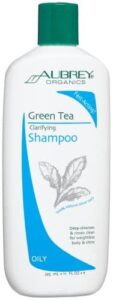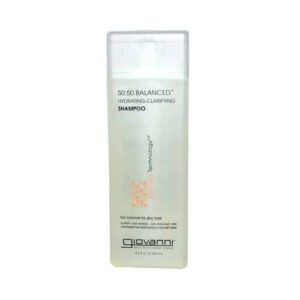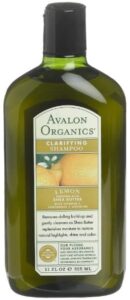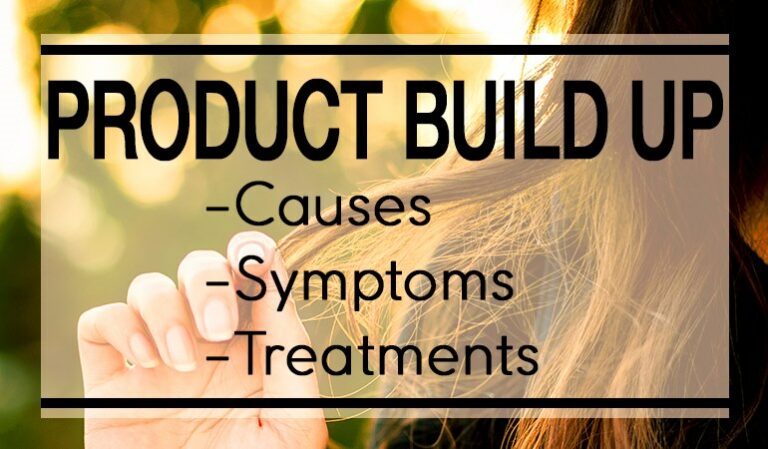Dandruff Deconstructed is reader-supported. All reviews are independent and any products reviewed are purchased by the site owner. To help fund this model, some of the links on the site are affiliate links. If you decide to make a purchase from one of these links, this site will receive some commission. At no cost to you. It helps keeps this place running. Learn more
You may or may not know that it’s an extremely common form of dandruff…
But it isn’t technically dandruff at all!
Dandruff is a medical condition.
Product build up isn’t medical at all, but rather behavioral.
The great news is that it’s extremely straightforward to get rid of product build up using a number of simple treatments.
What is Product Build Up
Some of the gels, mousses, hairsprays, shampoos and conditioners contain chemicals that don’t dissolve in water. They leave tiny amounts of residue every time you use them. Over time, these residues accumulate, leaving a coating of gunk on your hair and scalp. Water can’t penetrate this build up and it’ll eventually dry your hair and scalp.
Your scalp has a natural cycle of shedding skin. Skin is shed and new skin replaces it. This cycle is affected by product build up and your flakes of skin mix in with the gunk. As this skin/gunk mixture builds it will naturally start to fall from your scalp and will look like dandruff. As we mentioned before, it’s not dandruff, but it certainly looks like it.
What causes product build up
Not shampooing enough
Adding products on top of products without regularly washing them will inevitably result in that familiar residue on your scalp.
Over using products
I did this as a teenager and have regretted every photo. Adding too many products too many products will give you waxy, greasy, flaky, lint attracting hair. Flakes from your scalps congeal with the hairspray/gel/mousse/shampoo (insert product here) causing residue and eventually dandruff.
Misuse of products
I was pretty useless at putting on the gels and waxes as a kid. I would grab a handful and not distribute the products evenly at all. The result, really bad hair and product build up.
Not rinsing thoroughly
Failure to rinse out all your products out will inevitably cause product build up over time. Rinse thoroughly, and don’t use scalding water!
Using products containing silicon and petroleum oils
Silicones and petroleum oils are added to shampoos to de-tangle and “moisturize” your hair and scalp. They give your hair that lovely soft sheen. The ironic thing is that they don’t moisturize at all. Don’t forget, the best moisturizer for your hair or scalp is water! Silicones/Petroleum oils make your hair feel moisturized though, and that’s why people like them. What they don’t know is that many of these products are not water soluble. Prolonged usage will coat your scalp with a layer of gunk. This can cause all sorts of trouble, not least product build up.
Luckily we monitor all our shampoos for all the silicon/petroleum oils that aren’t water soluble.
Co-washing
Co-washing is a relatively new practise of using conditioners instead of shampoos to wash your hair. The theory is that the conditioners won’t strip your hair of its natural oils. Personally, I think this is a needless exercise as there are plenty of extremely gentle shampoos out there. On the flip side, movements like this are forcing manufactures to rethink the way they formulate shampoos and conditioners. Personal opinions aside, many of the conditioners contain silicon/petroleum products. Using the wrong conditioner will cause product build up.
Having hair with low porosity
Low porosity means your hair isn’t as porous as most i.e. your hair doesn’t absorb water as well as most people’s hair. The reason for having hair with low porosity is that the cuticle scales lie tight against the surface of your hair strand. The tightness of these scales prevents water from entering your hair. There are plenty of upsides to it; your hair will look shiny in comparison to someone with highly porous hair. However, products tend to remain on the outside of your hair. This can cause build up.
Naturallycurly.com contains an excellent guide on determining how porous your hair is.
What are the symptoms of product build up
If you have product build up you’ll typically have a film of residue on the scalp and hair. The flakes will be white and powdery as opposed to the grainy dandruff you get from a dry scalp, the yellow crusty oily shampoo from seb derm and the silvery scaly dandruff from scalp psoriasis. Your scalp will probably have a film of gunk as well as your hair. Your hair will feel lifeless and will be dull and overly dry. You typically won’t have red patches of inflamed scalp associated with seb derm and psoriasis too. If you’re still unsure get your scalp checked by a professional. The diagnosis is extremely routine and straightforward. Once you know you have product build up – you’ve come to the right place…
How to treat product build up
Long term the solution is to identify the products that cause build up and either moderate the usage or stop using those products altogether. It’s a methodical and scientific process that will take time but reap dividends long term.
If you have existing build up brushing will help clean your hair and scalp by picking up pieces of buildup, skin or dirt from the hair. There are two types of brush I’d recommend.
For those with longer hair, a boar bristle brush is ideal. Remember though, if you have thick hair try to buy one with large spacings between the bristles. Those with short hair should go for a nylon ball tipped smaller plastic brush.
An even better alternative is a scalp brush. As scalp brush will invigorate your scalp by removing flakes, build up and dirt. And they feel so so good!
There are a whole load of purported natural treatments for clearing product build up. If you look only you’ll see a whole swathe of articles on the benefits of baking soda and apple coder vinegar. As an alternative to the more natural treatments we recommend the use of a good clarifying shampoo. Using a good clarifying shampoo occasionally will clean the oils and heavy residue that normal shampoos can’t. The shampoos are often more acidic and give a deeper clean than your regular shampoos. The downside is that clarifying shampoos tend to be harsher than regular shampoos. Regular use definitely isn’t recommended; once a month or so should do.
The best shampoos for Product Build Up
Our current favorite shampoos all contain gentler ingredients than many clarifying shampoos but are just as effective at that deep clean. We always monitor contact allergens in the shampoos and aim to recommend the shampoos that strike a balance between performance and formulation.

Aubrey Organics Green Tree Clarifying Shampoo
Designed to treat Product Build Up
A gentle clarifying shampoo may sound like a contradiction in terms, but Aubrey Organics have done a fantastic job formulating a clarifying shampoo with mild ingredients.
It’s possibly the gentlest clarifying shampoo we’ve reviewed yet.
It smells nice, it will clarify your scalp, it will help remove dandruff caused by product build up.
But this comes at a cost – it will dry your scalp if used too much.
Like all clarifying shampoos – use absolutely only when needed.
Read the entire review


Giovanni 50:50 Balanced Hydrating-Clarifying Shampoo
Designed to treat Product Build Up
The self proclaimed “natural-product industry leader”, Giovanni shampoos are multiple award winning shampoos entirely manufactured in the USA.
The 50:50 hydrating/clarifying shampoo has an ambitious purpose; to both moisturize and clarify.
It largely achieves this, although some of you may wish to use a conditioner too.
Excellent!
Read the entire review


Avalon Organics Clarifying Lemon Shampoo
Designed to treat Product Build Up
Avalon are a company who are famous for producing organic shampoos made with mild ingredients. On the bottle itself, they state they make “safe” shampoos with no “synthetic fragrances, phthalates, harsh sulfates or parabens”. This is a bit disingenuous – the fragrances may be natural, but they are as harsh as they come. The shampoo smells nice though!Despite the fragrances, this is an excellent choice.
Particularly if you like lemons.
Read the entire review

Our staff picks are all excellent shampoos but we have plenty other product build up treatments
